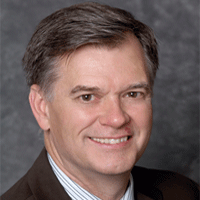F&H talks to new CRFA president and CEO, Garth Whyte
F&H: This past June you joined the CRFA as its new president after 26 years with the Canadian Federation of Independent Business. Over the years, the CRFA’s mandate has grown and the association has evolved into a lobby group. Do you see that continuing under your leadership?
I see it continuing and being enhanced. CRFA’s recent lobbying concerning the B.C. and federal governments’ proposed HST is a good example of how we can enhance our lobbying effectiveness in the future. We were out ahead of the issue. We undertook a political action campaign and had members informed about it before the HST agreement was announced.
In less than a month, we were able to deliver 1,000 petitions signed by our members concerned about the impacts of the HST to the finance minister. We also surveyed our membership on the impact of the HST — 91 per cent said it would have a negative impact; 85 per cent said it would have a significant negative impact on their business. We completed the survey in one week and had about 400 responses. We involve our members and we affect change.
F&H: There’s an underlying feeling in the industry that operators aren’t as political as they need to be. How do you plan to curb member apathy?
We’re moving towards a members-first philosophy. We want to create an environment to help our members grow and prosper in every community. They don’t have time to lobby — that’s why they need an association. The industry needs a voice; it needs someone to be the glue that brings the sector together. It needs a conduit to talk to the media, the public and the government to keep issues out there.
We’re changing our approach slightly. Right now our members have identified they’re dying a death by a thousand cuts — whether it’s municipal issues, garbage strikes, increases to minimum wage, or new trans fat and sodium regulations. We are pushing to have an overall vision for our sector. Recently I presented at the federal/provincial/territory Tourism Ministers’ meeting. We were one of three groups invited to present (in addition to the tourism industry and the airlines). But rather than ask for grants or programs, our pitch challenged the Ministers to make the restaurant industry a high-priority public policy area for their governments. If it is a high priority, then all policies that impact our industry should be filtered through that government priority and this will hopefully lessen the myriad tax and regulations that bombard us.
I also presented the Ministers with an anti-vision — the United Way campaign that shows a picture of a dishwasher who’s lifted into “more meaningful work.” My intention is not to attack this campaign but to use it as a wake-up call. When I show this picture to our members, first they become angry and then they feel hurt. In fact, we have many CEOs and restaurant owners who started as dishwashers. We have a great story to tell. We’re a $60-billion industry that employs one million people. That’s six times more employees than in the auto-manufacturing industry. We all have to rally around this positive vision because it’s taken for granted by governments and the general public.
F&H: What are you advocating that operators do on the H1N1 front?
It’s a tricky issue. You don’t want to scare your customers, but at the same time you have to be prepared. We have excellent information on our website, with a checklist of what to do. There are many things you need to do — if your employees are sick, tell them not to come in, and everyone needs to wash their hands. Fortunately, in the foodservice sector these are practices we follow regularly. Operators should also have contingency plans — both for staff and customers. And it’s important to note that the health sector turned to us to help fight this issue.
F&H: Have you changed the way the organization works?
Internally, we’re improving cross-function capabilities. We will be more open — we’re communicating to our members and it’s not just about conferences and tradeshows. It all relates to the same thing: how do we create an environment to help our members grow and prosper?
F&H: Apart from cost savings, what would compel a restaurateur to join the association?
If you’re upset about how your business is being treated, then you have a compelling reason to join. There are dozens of issues we fight on your behalf — if you don’t speak up, or if we don’t speak up for you, why would the government listen?
F&H: Last year, many of the equipment suppliers belonging to MAFSI decided to pull out of the CRFA Show, and many are not returning next year. In September, the CRFA postponed the show in Alberta. What do these changes mean to your association?
The key for us is to be more member and supplier-focused. You have to do what your customers want. We could have produced the Alberta show and broken even, but we said, ‘Let’s regroup and see what Albertans and our suppliers want.’ So we’re looking to enhance our show. Our goal is to have such a great show that people feel compelled to participate, though they have the right not to. We’re looking at a whole menu of issues on how to make the shows better. It’s more than just a tradeshow; it’s got to be an event.
Tradeshows are evolving; the whole process is evolving but people still want to kick the tires and see what’s out there. Why can’t the CRFA Show be the Toronto International Film Festival of the industry? It’s just about thinking big. As far as this year’s tradeshow, we’re already on track to a successful event, but we need to find ways to make it better. You’ll soon be hearing about some exciting things for that show.
F&H: The CRFA celebrates 65 years this year. How do you think it will change in the future?
A strong foundation has been built over 65 years, but it’s time to be more open. Let’s open this organization up to our members and to the public. People should know what we’re doing and who we are. We’ll also open it up to our employees, so that each area knows what the other is doing. There are synergies that can be had and we’re going to be leveraging them.
We’re going to focus on our top 10 issues, not our top 50, and tackle them three at a time. The first is getting our message out about how important this sector is to the economy. You’ll also see a movement to becoming a more members-first organization, because if you take care of your members the revenue will come. In two years, I’d like to see more people asking, ‘How do I join your organization, because you are our voice and you understand us.’ I’m really excited by that. When I do a gut check, my gut feels good. I think there’s a lot of potential here.
You’ll see a stronger online presence, too. If we can’t physically go to our members, then we’ll at least get their opinions. We want to be a hi-tech, hi-touch organization. It’s a team approach, with everyone rowing in the same direction: our board, our employees, our members. Then you’ll see results.




















